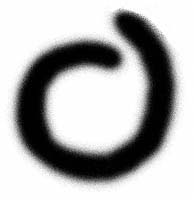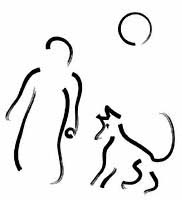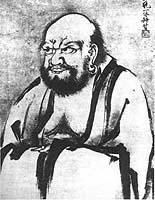- Home
- Archive -Dec 2000
- The sound of on. . .

The sound of one hand clapping
- In :
- Personal Growth
December 2000
By Swati Chopra
For centuries, the secret doctrines of Zen learning have been transmitted from master to disciple in the form of seemingly absurd riddles called koans. Intense meditation upon these is said to lead to enlightenment
 |
Which is the highest mountain in the world? How many planets are there in the solar system? Will the Loch Ness monster ever resurface? What inspired Newton? What caused Van Gogh’s prolific brilliance? Who killed Lady Diana? What is the sound of one hand clapping?
Your time starts… now.
Mount Everest… nine… depends on the health of the Scottish tourism industry… an apple… schizophrenia… don’t know but whoever it is will come up with a tell-all bestseller sooner or later… the sound of one hand is… what was that again?
Rapid-fire questions, brainteasers, tantalizing posers, circuitous conundrums—we thought we had seen them all, glued as we are night after night to all those quiz shows out to make crorepatis (millionaires) of us all. But that was before we encountered the most vexatious breed of them all—the koan, a Zen riddle so puzzling yet so potent that single-minded contemplation of one may lead you to instant nirvana.
Zen, of which the koan exercise is a tool, is a Japanese sect of Buddhism, which in spite of having masters and monasteries believes paradoxically that nothing can be taught. Adepts compare initiation into Zen to pouring ‘boiling oil over a blazing fire’. The logical mind is considered to be the greatest stumbling block on the way to satori (enlightenment in Zenspeak), as is evident from this koan: A monk was asked to discard everything. ‘But I have nothing,’ he exclaimed. ‘Discard that too!’ ordered his master.
 |
Koans have been an invaluable aspect of the spontaneous master-disciple interaction in Zen. D.T. Suzuki explains in Zen Buddhism: ‘The idea is to unfold the Zen psychology in the mind of the uninitiated, and to reproduce that state of consciousness of which the statements are an expression. That is to say, when the koans are understood the master’s state of mind is understood, which is satori and without which Zen is a sealed book.’
The prospect of satori powers the quest in all spiritual practices. It is an experience so cataclysmic that it has often been called a ‘fiery baptism’. I like to think of it as a peep into the soul of the universe that accompanies the dissolution of duality. P.S. Wasu, who conducts workshops based on Zen, likens satori to an empty circle: ‘There comes a state when the Zen practitioner is able to view everything as a synthesis of opposites that arise from one another. All rational judgments become irrelevant and one starts viewing reality intuitively as it actually is—nothingness that is complete in itself, much like an empty circle.’
A single dip in the experience of satori and one is transformed forever. As judgmental constructs based on duality-subject-object, good-bad, success-failure-fall by the wayside, one flows into a state of being where the rigid persona is sloughed off. One begins to exist as life itself. ‘How can we know the dancer from the dance?’ in W.B. Yeats’ Among school children seems to express perfectly this existence in oneness sans boundaries that is satori.
That satori may be achieved via koans was the view evolved by the monk Hakuin of the Rinzai sect. Hakuin (1685-1768), a robust monk often likened to Socrates for his predilection for Q-A sessions, vigorously opposed other Zen sects that preferred to let enlightenment glide in through years of zazen (Zen meditation). Rinzai Zen, known as the ‘sudden’ school of enlightenment, however, gained ground by adopting a conciliatory approach. ‘Sudden’ enlightenment was acceptable after self-cultivation spread over many lives. The koan exercise came to be viewed as a battering ram that broke down the final vestiges of rational thinking already softened by zazen.
Traditionally, a master would judge the novitiate’s spiritual progress before giving him a koan. The novitiate usually came up with answers founded upon logic or scriptures and sutras, which the master summarily rejected. Of the final resolution, Hakuin says: ‘If you take up one koan and investigate it unceasingly, your mind will die and your will shall be destroyed. You face death and your bosom feels as though it is on fire. Then suddenly you are one with the koan… and you discover your true nature.’
 |
The master would not hesitate to strike the disciple physically to resolve the koan. Such resolution once had the monk slapping the master, Obaku, and yelling: ‘There is not, after all, much in the Buddhism of Obaku.’ Rinzai explains this idea of ‘therapeutic hitting': ‘Many students are not free from the entanglement of objective things. I treat them right at the spot. If their trouble is due to grasping hands, I strike them there. If their trouble comes from their mouths, it is there I strike.’ Rinzai was also famous for shouting Katsu!, a nonsensical word, as an answer to koans.
Because of its tongue-in-cheek humor, the koan is unparalleled in world mysticism. Take this koan involving the master Bokuju. He was asked: ‘We have to dress and eat every day. How can we escape from that?’ Bokuju answered: ‘We dress, we eat.’ ‘I do not understand,’ persisted the questioner. ‘Then put on your food and eat your dress!’ replied Bokuju. In another koan, Hokoji, a Confucian asked haiku poet Basho: ‘Who is he who does not keep company with any living thing?’ Said Basho: ‘I will answer that when you swallow the Hsi Ch’iang river in one draught.’ Clearly, if we expect anything logically illuminating from Zen, we are missing the whole point!
Providing an insight into the working mechanism of the koan, Wasu says: ‘Years of social and psychological conditioning forges certain neural pathways within the brain. Our thinking settles in these grooves making it difficult for us to comprehend satori.’ Koans cause a unique spiritual tension that forces the mind to break out of the trap of logic by using what may be called intellectual violence.
Consider the famous ‘Mu koan‘. A monk asked Master Joshu: ‘Does a dog have Buddha-nature?’ Joshu replied: ‘Mu.’ Doctrinally, its answer is ‘yes’ as all beings can evolve towards enlightenment (Buddha-nature). But Joshu deliberately does not answer with an unequivocal ‘yes’ or ‘no’ so as to demolish the monk’s dependence on scriptural logic. ‘Mu’ is the Chinese ideogram for ‘nothing’ which might also be interpreted as ‘no-thing’ or emptiness. With a single syllable, Joshu has revealed no-thingness as the core of existence.
 |
The use of absurdity for conveying serious ideas is not an exclusive preserve of Zen, although using it for enlightenment is. The Dadaists and Absurdists of post-World War Europe, faced with destruction and disillusioned with the bourgeois society that did nothing to stop it, despairingly concluded that existence is meaningless.
Dadaists used absurdity as a tool to articulate despair. Dada art was created with junk and visually repulsive materials as an expression of their stringent anti-establishmentarianism. Ben-ami Scharfstein equates this nonsensical Dada trait with the ‘mystical madness’ of Zen masters in his introduction to The Sound of the One Hand. He cites a poem by one of the Dadaists, Kurt Schwitters that begins with:
Z
A R P
A B C
and ends with :
Z
Z
Z
This nonsense verse is compared to one composed by Master Mumon who attained satori after a four-year contemplation of the ‘Mu koan‘:
Mu! Mu! Mu! Mu!
Mu! Mu! Mu! Mu!
But the similarity ends at this comprehension of the innate nothingness of the universe. Whereas the ‘no-mind’ state is the desired bliss of Zen, the ‘nothingness’ of the European Absurdists is morbid and frightening. Emptiness is painful for Beckett, Camus, Kafka, and Proust who live in a universe abandoned by God with only one exit gate: death.
At the core of Zen’s no-mind state lies silence. And it is not only the koans that reflect this lingual austerity. According to Dr Satya Bhushan Verma, Professor Emeritus of Japanese at JNU Delhi, haiku, the 17-syllable Japanese poems, started out as koans. ‘In those 17 syllables, the poet has to compress an entire wealth of meaning, much like the nonsensical words of the koan that have the power to enlighten.’ However, Thomas Hoover, author of Zen Culture differs. About Basho’s haiku he says: ‘Whereas the anti-logic koans were intended to lead up to this moment (of satori), Basho’s haiku were the moment of enlightenment itself.’ He quotes this deceptively simple haiku that describes ‘an intersection of the timeless and the ephemeral':
An ancient pond
A frog jumps in
Plop!
 |
With their canonization, much of the spontaneity of the interactive koan experience was lost, what with the same koan being given to a number of novices during a lecture. In recent times, the dynamic koan tradition has all but disappeared. Says Dr Verma: ‘The ancient koans may still be parroted in certain monasteries in Japan but there are neither the masters nor the disciples to carry on the tradition.’ Though their customary irreverence and humor have made koanspopular in the West, purists might argue that mere reflection on them is not enough, they have to be accompanied by self-cultivation.
The koan is just one of the many tools employed in Zen. Almost every activity performed during the course of the day in the Japan of old was elevated to ‘the path of Zen‘, whether it be drinking tea, ink-painting, pottery or archery and swordsmanship. Elaborate rules governed these, the trick was to bypass them and unite with the action. For instance, the Zen archer unlearns his training even as he stands poised with the bow drawn taut in his hands, aiming at the target. Just before he lets the arrow fly, he becomes one with the target. The subsequent release of the arrow has been equated with the resolution of a koan, both occurring without deliberation.
Finally, meaning becomes meaningless, the writer merges with the world. Dirt collects under the fingernails, life flows on. Concentrate on the moon, and not on the finger that points it out. Thanks Basho, for reminding us. Silence spreads outwards from within one’s being on the wings of a thousand suns. The hand flies out and strikes itself. The cosmos reverberates with the sound of one hand clapping.
To read more such articles on personal growth, inspirations and positivity, subscribe to our digital magazine at subscribe here
Life Positive follows a stringent review publishing mechanism. Every review received undergoes -
- 1. A mobile number and email ID verification check
- 2. Analysis by our seeker happiness team to double check for authenticity
- 3. Cross-checking, if required, by speaking to the seeker posting the review
Only after we're satisfied about the authenticity of a review is it allowed to go live on our website
Our award winning customer care team is available from 9 a.m to 9 p.m everyday
The Life Positive seal of trust implies:-
-
Standards guarantee:
All our healers and therapists undergo training and/or certification from authorized bodies before becoming professionals. They have a minimum professional experience of one year
-
Genuineness guarantee:
All our healers and therapists are genuinely passionate about doing service. They do their very best to help seekers (patients) live better lives.
-
Payment security:
All payments made to our healers are secure up to the point wherein if any session is paid for, it will be honoured dutifully and delivered promptly
-
Anonymity guarantee:
Every seekers (patients) details will always remain 100% confidential and will never be disclosed
